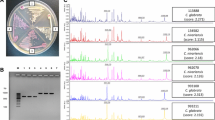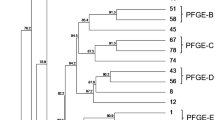Abstract
A series of 35 strains of Candida glabrata isolated from 29 subjects (5 AIDS patients and 24 HIV-seronegative individuals) were typed by electrophoretic karyotyping and tested for their susceptibilities to both fluconazole and itraconazole. Almost every individual harboured his/her own specific isolate (DNA type). Neither the source of isolation nor the patient's HIV status was associated with a given DNA type. Recurrences were generally due to the persistence of the same DNA type over time. Only 9% of the isolates showed reduced susceptibility to fluconazole (MIC≥8.0 μg/ml), while 43% of the isolates showed reduced susceptibility to itraconazole (MIC≥0.25 μg/ml) (P=0.02). These data show that electrophoretic karyotyping is a useful technique for DNA typing of isolates of Candida glabrata. Care must be taken prior to inititation of antifungal therapy with either of these drugs.
Similar content being viewed by others
Author information
Authors and Affiliations
Rights and permissions
About this article
Cite this article
Barchiesi, F., Falconi Di Francesco, L., Arzeni, D. et al. Electrophoretic Karyotyping and Triazole Susceptibility of Candida glabrata Clinical Isolates. EJCMID 18, 184–187 (1999). https://doi.org/10.1007/s100960050255
Issue Date:
DOI: https://doi.org/10.1007/s100960050255




